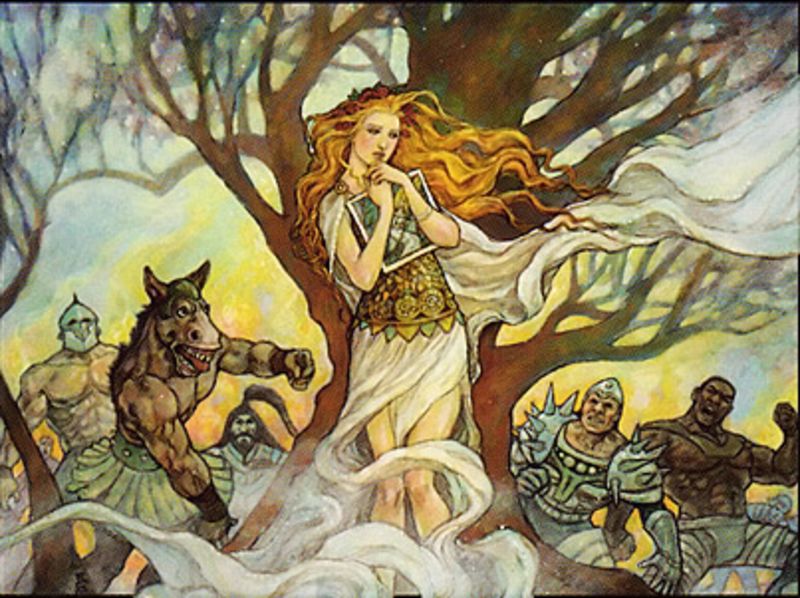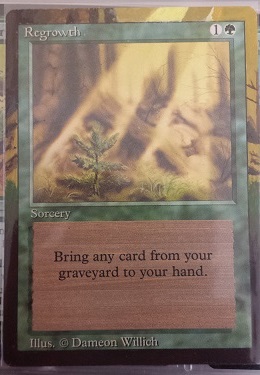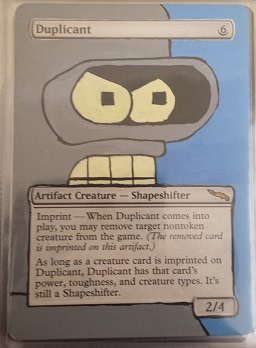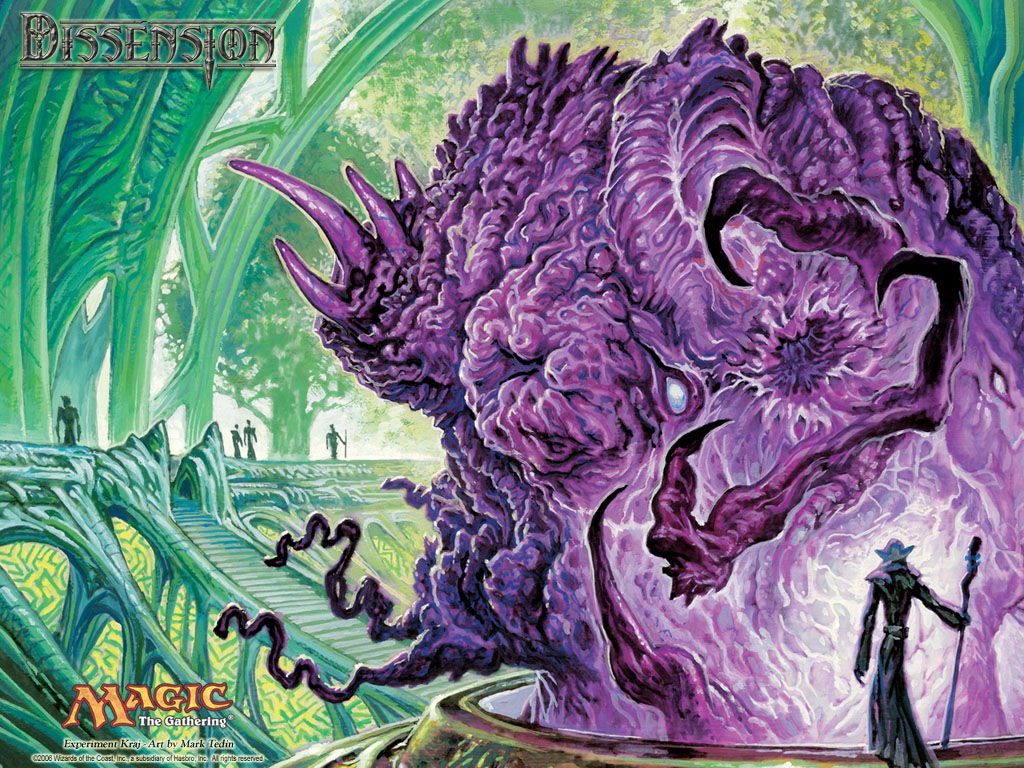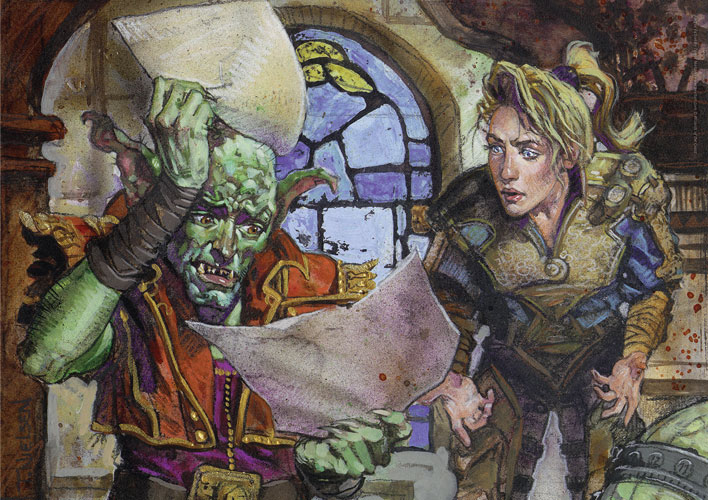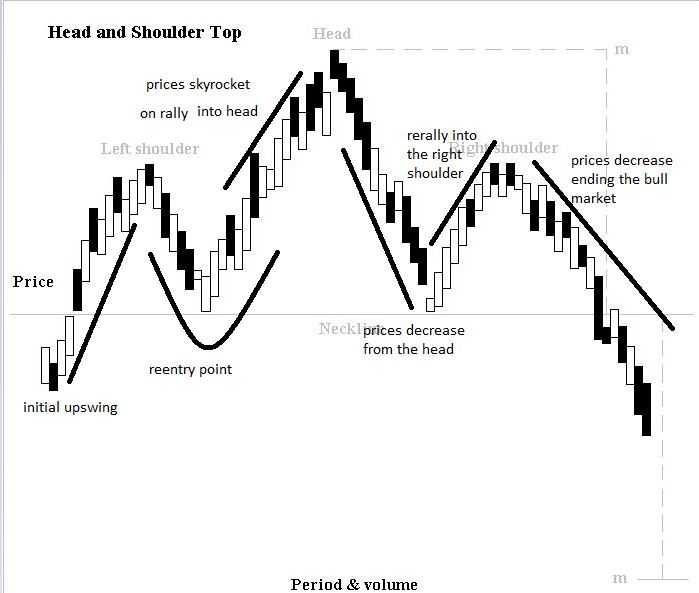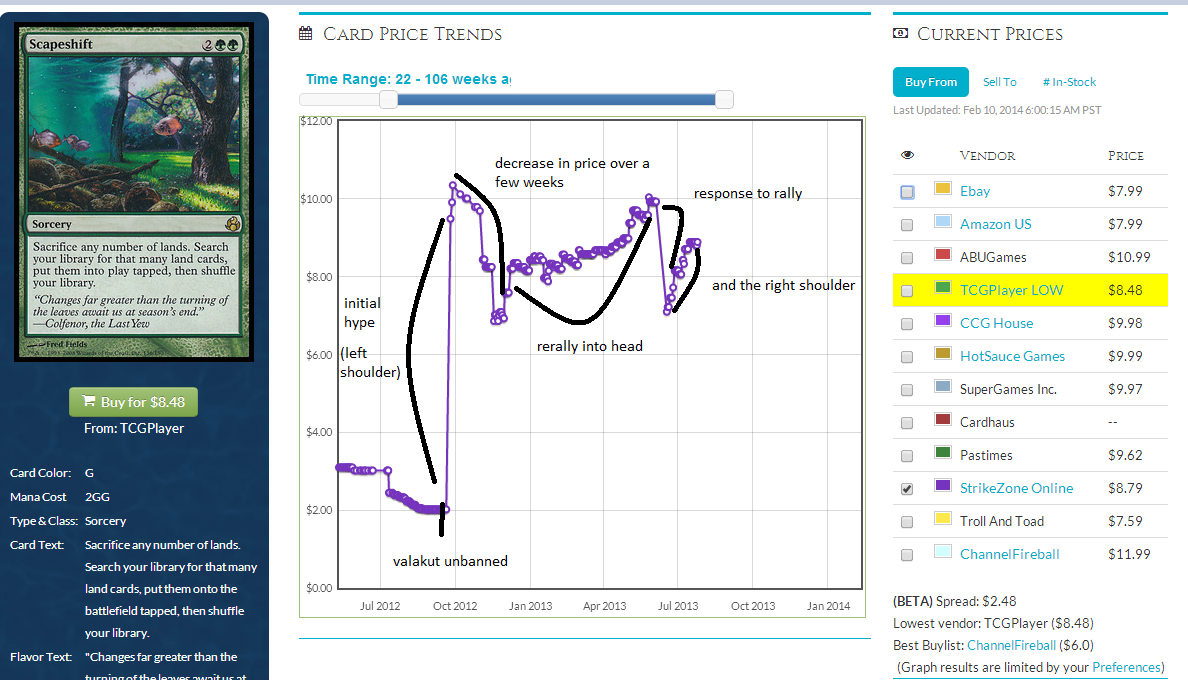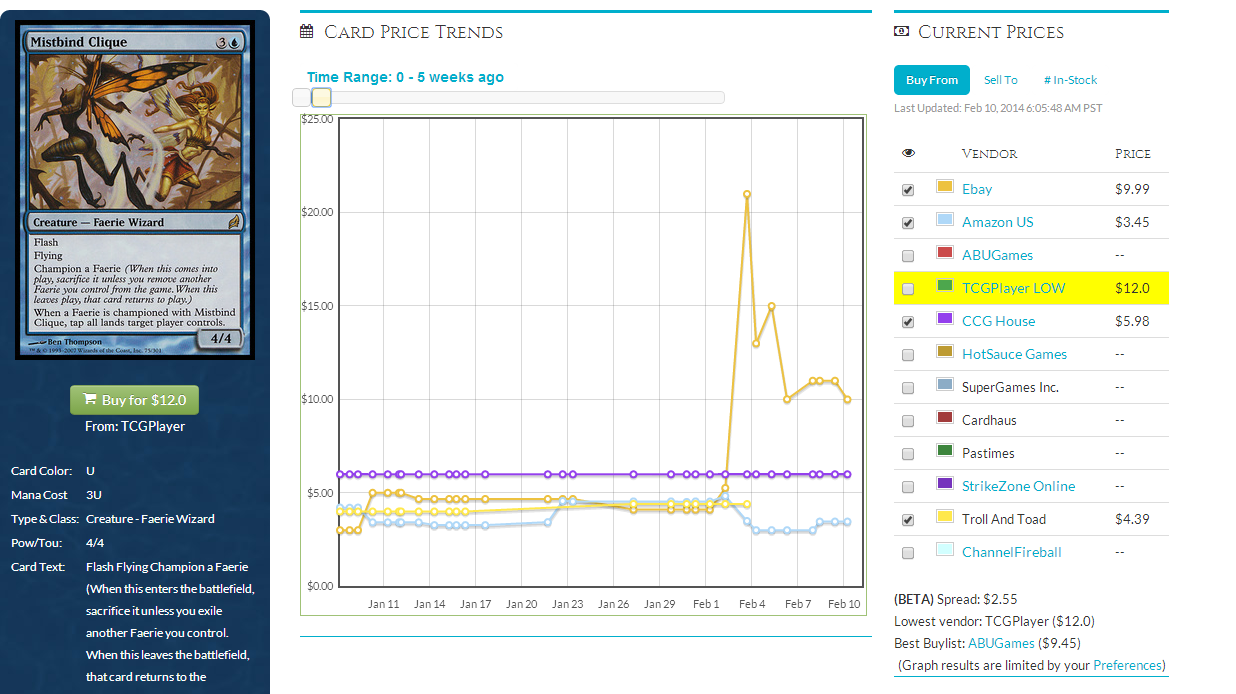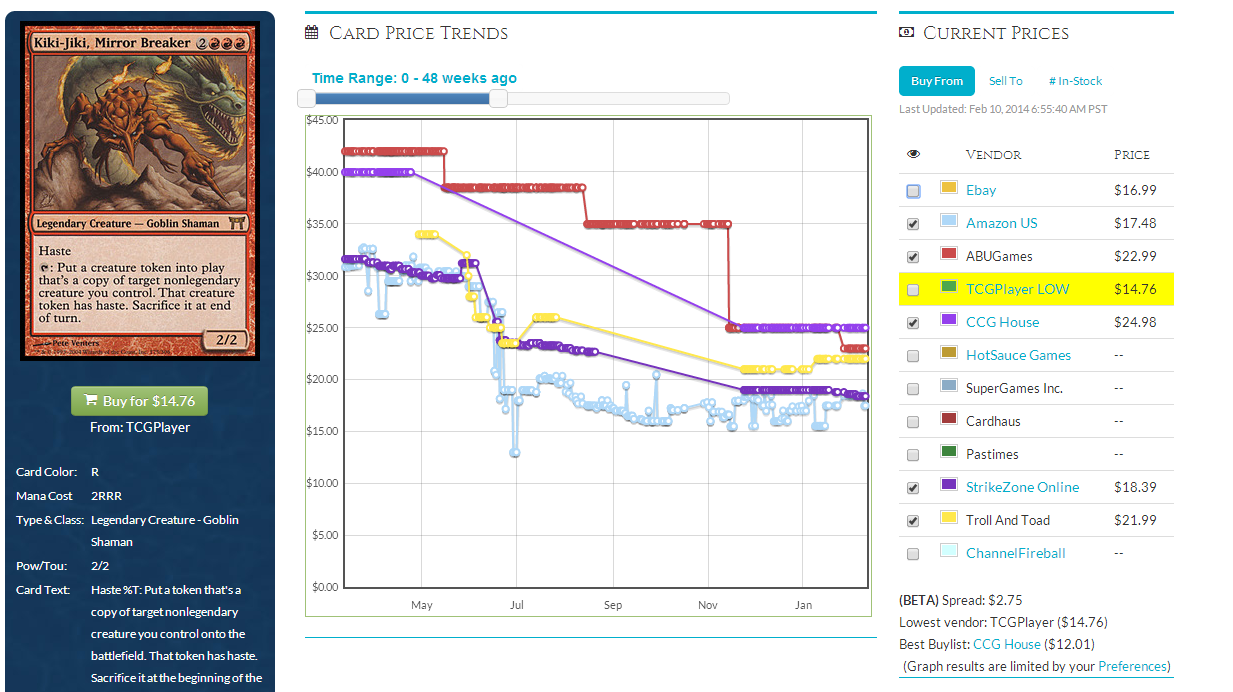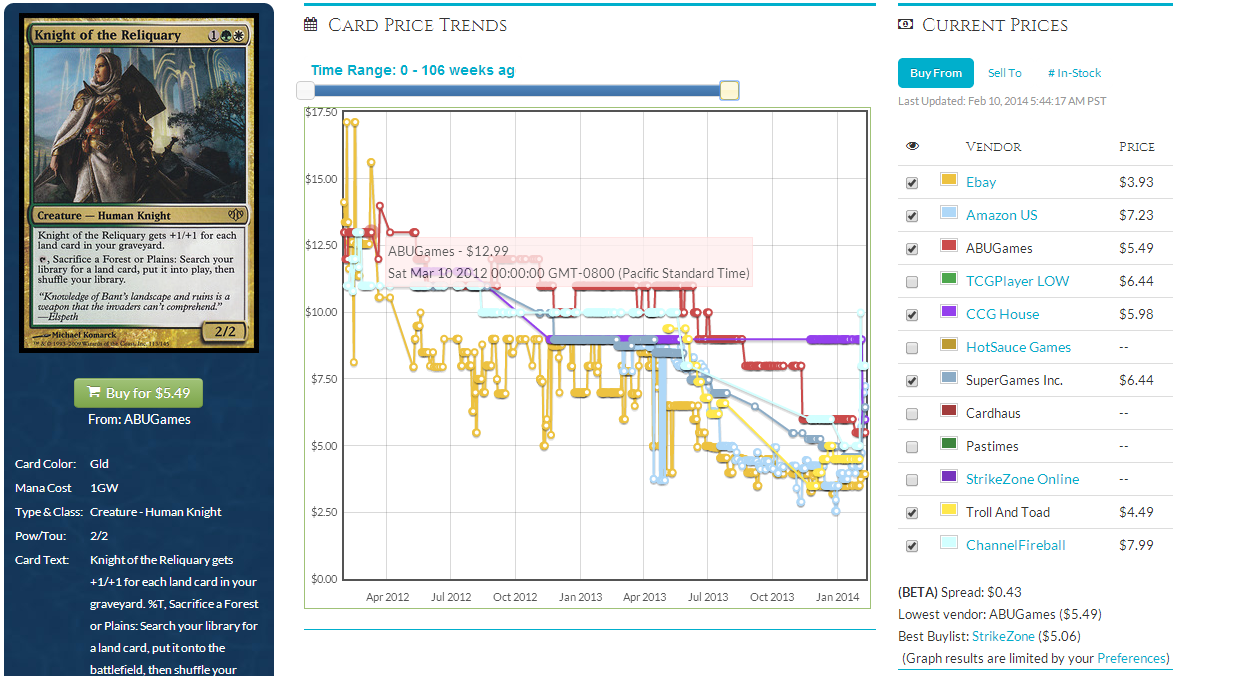Part of the allure of Magic is the wide array of choices a player has when selecting a deck. However you want to win, it can happen. Whether you want to grind people to dust under the heel of attrition, ramp into gigantic threats, flip their library into their graveyard, or attack with a million billion faeries, the choice is yours. This choice leads to a sense of customization and individualization. When you first put together a legacy deck, it’s “a Metalworker deck.” After you play it for awhile and change a few cards based on what you think works and what doesn’t work, it becomes “my Metalworker deck.” Tailoring our weapons to ourselves makes us feel more in touch with the game and the process. We take ownership of cards and decklists, and treat them as a mark of our ingenuity, cleverness, and innovation.
It makes sense that players will go to any length to make a deck appear special, typically by adding unique visual flair and increasing the dollar value of the components. Conspicuous consumption is a very real thing, and Magic is no stranger to it. In the pursuit of luxury, many players will choose the “stock” option of trying to foil as many cards as possible. Some will shoot for foreign non-foil, perhaps of a specific language. Some want art alters. Others choose to spend ludicrous amounts of money to go with Japanese foils. There are many paths to take in making a deck yours.
Some of these paths are very expensive. Japanese foils regularly fetch anywhere from four to one hundred times more than an English non-foil. Even English Standard staples in foil get rather expensive. How does a player that wants a nifty looking deck that feels like “theirs” do so without breaking the bank, especially in a way that won’t devalue the hell out of their collection every year?
Back to Basics
Nearly everyone agrees that Unhinged lands look awesome. They’re all John Avon, how could they not? But they’re expensive. Islands are nearly $10 these days for a nonfoil. Foil Unhinged Islands are around $70, and the others aren’t much cheaper. For true absurdity, there are Guru Islands, which currently clock in around $200. Zendikar basics are certainly fetching, but everyone and their mother has nonfoils, and the foils aren’t cheap. Acquiring a few foil Zendikar lands for your Legacy deck isn’t too tough, but if you want to play Standard you’re going to need about twenty of each basic. At an easy $10 a pop, that is a pricey set of basic lands. 
Instead of going with the same lands everyone else has/wants, head off the beaten path. First, choose old border or new border. I personally prefer old border, as I feel that the foils are more brilliant, but new border gives you far more artwork options. Next, choose an art. There are lots of basics with awesome artwork throughout Magic’s history. Finally, start acquiring!
A single foil basic isn’t as noteworthy as a single foil Unhinged land, but doesn’t underestimate how good it looks when all your basics match. And perhaps most attractively, a random foil basic is going to be around $1. Don’t worry about trying to find all one hundred or so at once either. Pick out your five, and list them in any of your Have/Wants lists if you do online trading. Browse the foil basics at your LGS. (All stores have a box or binder of these.) Every time you place an order online for other cards, check to see if they have any of your basics in stock. (If the site doesn’t specifically list collector’s number, make sure you email them first to ask about exactly which one it is they have in stock. Some will just list “8th Edition Foil Island” without mentioning which of the four it is.) Slowly you’ll fill up on them, and before you know it you’ve got a huge stockpile of all matching lands that are yours and yours alone.
Uncommon Aesthetic
Foils rares and mythics are splashy, but they’re often expensive. Even the bulkiest of bulk rares are usually a dollar or two foil, and as they become playable prices rise quickly. It’s even worse when you consider foiling something like Thragtusk, which you know very well is going to rotate in a year. Instead, focus on the workhorse half of your deck – the commons and uncommons.
Foil Hero’s Downfall? Twenty bucks. Foil Doom Blade? Under $4. Cloudfin Raptor is a $2 foil. Elvish Mystic is kind of pricey at the moment, but Devour Flesh is a buck. Ultimate Price and Gray Merchants are only a few dollars as well.
Not all commons and uncommons are going to be throw-in cheap, as Elvish Mystic, Dissolve, or the Ravnica charms will attest to. But plenty are quite inexpensive, and a good way to add additional shiny to your deck without breaking the bank. The best time to grab these is just as a set releases, preferably during prerelease season. My strategy? Once the full spoiler is up, I peruse all the commons and uncommons that look remotely playable, and order foil sets of each for around $2.
Heritage
Another thing to watch for is reprints and older editions of cards. Sometimes people won’t even realize a card is a reprint. Remember Ray of Revelation from Innistrad? How many of you knew that was a reprint? I’m sure some, but not all. It was originally printed in Judgment, which conveniently enough, had foils. I loved rocking my originals. They were unique, looked great, and I was the only person in the room with them.
There are plenty of other ways to end up with different editions of cards than everyone else in the room as well. Edge of Autumn could pretty easily end up in Standard. If it does, do you want to be casting the plain Jane M15 edition, or the awesomely-bordered Future Sight foil that is currently $.60?
Occasionally there are nifty Gateway promos that don’t tend to permeate through American soil very quickly, but are still quite inexpensive. (The Plague Myr promo isn’t actually $17, it’s just some donk on Amazon asking that much.) There are piles of reprinted commons and uncommons, and while previous-edition rares may not differ in price too much from their new copies, they can still look quite different. Simple utility cards like Pithing Needle and Ratchet Bomb have alternate artworks, and there are some rares that have a swath of options when it comes to appearance.
Permanence
Think about what it’s like to have Sphinx’s Revelation in your deck. It sits in your hand for most of the game, obscured from all eyes but your own. When you finally do cast it, you just tap all your lands, flash the card quick, say “Sphinx’s for five” and toss it in the bin. Did your opponent even notice that it’s foil? Compare to Domri Rade. You slam that thing down on turn two, and it sits there, gleaming for the whole world to see for the whole game.
A foil Domri may not be especially cheaper than a foil Sphinx’s, but you’re getting more bang for your buck in the “look at how ostentatious I am” factor. In general, I much prefer to foil permanents over spells. They spend more time in play and are far more visible than something that moves straight to the grumper on cast. This isn’t to say you shouldn’t foil spells – I’ve got plenty of them in my personal binder – but if you have to choose between trading for a foil Revelation or a foil Jace AoT, think about which one you and your opponents are going to spend more time looking at.
Altered States
There are cards that exist in this state where there really is no good option for making it flashy. Take Duplicant. The foil on this thing is $35, and for the longest time was close to $50. Have you ever actually seen a pack foil Duplicant before? Nobody has. Even if they were holding it in their hands. The foiling process on it was so bad you could barely tell. It is unnoticeable in binder sleeves. Who the hell wants to spend $50 on a foil nobody knows is foil?
The recent Commander’s Arsenal edition is bad too, just in a different way. Not only is the art a bit muddy, it’s got that God-awful foiling process that looks like a Yu-Gi-Oh card and warps like nobody’s business. What’s an EDH deck to do?
Art alter! Alters are all over the Magic community, and they’re a great way to make expensive-to-foil cards look exciting without spending obscene amounts of cash. Whether it’s a card like Duplicant, which has an expensive foil that looks like garbage, Brainstorm, which has an absurdly expensive foil, or Force of Will, which simply doesn’t exist in any other fashion, alters are a flexible answer. The best part of alters is that not only are your choices practically infinite, you can even do it yourself if you’re willing to learn and enjoy a challenging creative endeavor. I’m absolutely not an artist, but I gave my Duplicant a whack a few years ago. It is by no means a remarkable piece, but simple cartoon-quality artwork with flat colors and bold lines is pretty easy to replicate on your own. Painting outside the border is quite accessible as well, and with very little skill you can create something that is one-of-a-kind with very little natural talent or skill. I included images of two of my attempts here, not because I think they’re particularly good, but because I want you to see that you can create something halfway-decent with literally zero artistic ability.
Even if you’re scared to pick up a paintbrush, there is a no shortage of willing artists out there ready for your commission. While Eric Klug produces some phenomenal work, he is by no means the only person putting out quality pieces. Check out this art alter thread over on MTGS to see what’s possible. It’s downright amazing what some of these individuals manage to create on a small piece of cardboard.
If commissioning a stranger isn’t a strategy you feel comfortable with, you can even try taking advantage of a good friend’s generosity. Most of us know someone who is an artist, whether it’s a close friend that knows Magic or just a girlfriend’s sister with a sketchbook. Artists typically love to art, and if you put some cards in front of them and say “would you please paint a fart coming out of this wizard’s butt” they may very well say yes with no expectation of reimbursement. The quality of your results will vary wildly, but if they’re doing it because they’re a nice person that is happy to create art others will see and appreciate, you can’t complain. Of course, if they do a decent job I’m sure an arrangement can be reached. Offering to take a friend out for dinner if he does your playset of Wild Nacatls as power rangers may be satisfactory all around. I’m not encouraging you to screw your artistic friends over, just explaining that it can certainly be worth trying to find out if there’s an arrangement that works for both of you.
On the Surface
Many of us carry playmats. Card store tables are often dirty, grimy, sticky, or even jagged. Nobody wants to slide their cards around on that, even in sleeves. The choice an average player has in playmats is sort of astounding. There are playmats from Grand Prixs, PTQ top 8s, judge mats, SCG IQs, and TCGPlayer events to name a few. This isn’t even counting the dizzying array of official and semi-official mats that companies like Ultra Pro offer. What do all of these mats have in common? They nearly all use MTG or other fantasy-grade artwork.
Solid color playmats can be had for $10. Carrying over from the “abuse your friendships for cheap card alters” idea, consider pestering a friend to do a custom image for you on a solid mat. It doesn’t have to be extravagant to catch the eye. Let your imagination run wild. Tell them you want dinosaurs playing Magic. Ask for Tarmogoyf eating an ice cream cone. Maybe even give the artist free reign to draw absolutely anything they want. You may end up with something that you absolutely love and never would have thought of on your own.
Alternatively, there are sites out there now that let you print your own playmats for quite reasonable prices. Given that Ultra Pro mats can fetch upwards of $30, ~$25 for a custom printed mat is a steal. Print your dog’s dumb face on the mat. Use goofy art that has literally nothing to do with Magic. (Make sure you have permission!) Go with a “texture” type of print, so it looks like you’re playing on top of a metal crate from Half-Life. Design a grid with outlines for deck zone, red zone, etc with visual accents. For less than a typical “dragon with glowing eyes” or “chick with a big sword and bigger hooters” mat, you can have something truly unique.
These are just some ideas on how to look good playing Magic without breaking the bank on Korean Foil Mana Leaks. I’m sure I’m not the only one who has found little tips on where to save a few bucks when making your game presence special. Please share any you have in the tips, so we can all be a little flashier in our own way. Meanwhile, this weekend is Modern Pro Tour Valencia. Keep an eye out Friday morning for hot info off the floor. Then we’ll digest the results next Wednesday.
